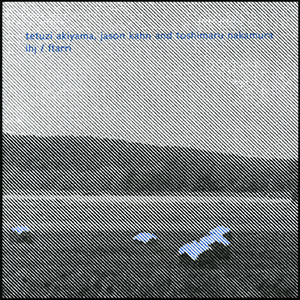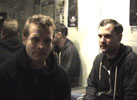Tetuzi Akiyama, Jason Kahn and Toshimaru Nakamura, "ihj/ftarri"
 Culled from two 2012 performances in Japan, the two pieces that make up this album are built from the most simple of arrangements. The way this improvisational trio put these basic instruments together, however, is what makes this album excel. Not a simple or easy listen, it succeeds in that difficult abstraction.
Culled from two 2012 performances in Japan, the two pieces that make up this album are built from the most simple of arrangements. The way this improvisational trio put these basic instruments together, however, is what makes this album excel. Not a simple or easy listen, it succeeds in that difficult abstraction.
Consisting of Tetuzi Akiyama on guitar, Jason Kahn playing synth, and Toshimaru Nakamura controlling a no-input mixing board, the instrumentation used by these three artists is sparse to say the least.On "ftarri", the two electronic instruments set the stage, from synth outbursts and detuned radio static (which is, I assume, Nakamura’s mixing board).Akiyama’s guitar drops in, first plucked and then bowed, played erratically to become an almost percussive, banging instrument.
There is an overall cut-up, quick shift type sound to the piece, with the trio quickly switching up styles and approaches.Shrill electronic swells are pulled away to silence just before they become unbearable, and moments that almost resemble conventional rhythmic progressions dissolve just as quickly as they appear.The middle section is especially heavy on the quieter moments, which are punctuated with harsher blasts towards the end of the performance.
The other piece, "ihj" (recorded at the International House of Japan) has the trio dialing back the hyper-kinetic nature of the previous performance a bit.On the whole it is less about the quick changes and jump cuts, and instead it has the trio working in more droning, sustained moments.Evident from the opening low-end tone, the performance lurks more than it jumps.
That is not to say that the piece is boring by any means:the trio still work their distinctly different instruments wonderfully, keeping a flow going throughout the performance.Akiyama’s ugly guitar scrapes cut through that opening electronic drone pretty quickly, and ultrasonic squeals pierce everything effectively.There is just a greater sense of sustain and force, with less introspective, silent moments.Grinding guitar and flirtations with synth melodies appear frequently, but dissonance and abstraction is still the dominant feature.
The sort of free improvisation that this trio works with is not the most accessible, but I personally find it captivating when it is done this well.The variety of noises coaxed from two conventional and one unconventional instrument only occasionally sound like they "should", being bent and manipulated by their players.There are moments that feel a bit directionless, like three individuals making noises independent of each other, but such is the nature of free improvisation.More often than not, each of the players compliment each other greatly, to result in a strange, sometimes confusing, but almost always fascinating work.
samples:
 



